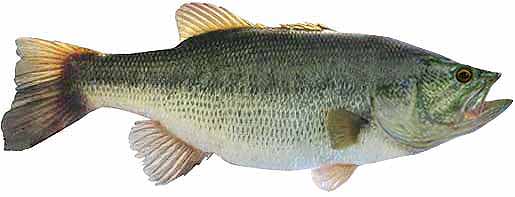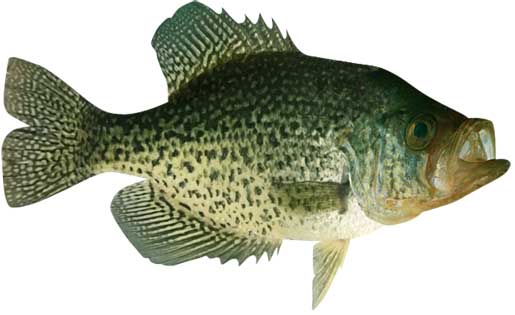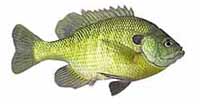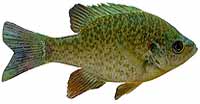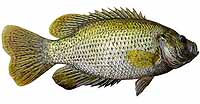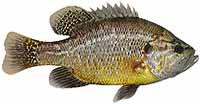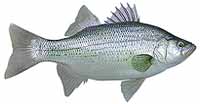Fishing Report For Normandy Lake, TN
By Rick Seaman
Last updated on .

Fishing Reports
Popular Fish Species Normandy Lake, TN
Largemouth Bass
Current Report: Good
There are 35 fish attractors, used by bass and other species, are maintained by TWRA.
FALL. Now that Fall is in full swing, bass here have moved shallow, following schools of baitfish into coves and shallow bays around 4 to 10 feet of water. Currently topwater, jerkbaits, crankbaits, and slow-rolled spinnerbaits are catching most of the bass. Later in Fall, as deeper water cools, bait and bass move out to ledges, channel edges, points and humps where flutter spoons, jigs and drop shots are often good choices in 8 to 18 feet of water.
WINTER. Winter will isolate largemouth around slightly deeper structure, flats, points and creek channels. They can be found from 10 to 25 feet deep. Here they hold, feeding less frequently, awaiting warmer water to return in Spring. Slow presentations are key to getting bites. On warmer days, especially during late afternoons, bass may move into 6 to 12 feet of water to feed.
SPRING. Once water temperatures rise into the low 60's, largemouth will move from deep wintering holes, to shallower water nearby spawning areas. Crankbaits and vibrating jigs are catching nice largemouth bass here, especially up lake in the major river arms - Copperas Branch, Anthony Branch and the Buck Hollow Branch. Bass use these coves, and pockets off the main coves, to spawn in Spring. After they stage their way out to main points, flats and ledges. Anglers report good topwater action from mid Spring through Summer, especially early in the morning, and on cloudy days. Vibrating jigs, jerkbaits and spinnerbaits typically get bites just away from the shoreline. At this time they are feeding aggressively in about 2 to 12 feet of water, and preparing for the spawn. Once water warms into the mid to high 60's, they will move into 2 to 5 feet of water, and create nests, then lay their eggs. Immediately afterwards, females move to deeper water and males remain to guard the eggs, and then the fry. After a couple weeks, the males also move to slightly deeper water, around 6 to 18 feet deep. Deep-diving crankbaits, vibrating jigs, plastic worms, jigs, worms, and swimbaits catch bass during this period.
SUMMER. Water temperatures will warm considerably in Summer. Bass will feed shallow, early and late in the day, where they will be caught in 6 to 20 feet of water, on square-bill crankbaits and spinnerbaits. Wacky-rigged stick worms always catch finicky bass when the bite is slow. Largemouth bass here feed on shad, herring, small sunfish and crawfish. During the hotter parts of the day, they are being caught on points, channel edges, and ledges 15 to 22 feet deep. Some of the best reports seem to be from anglers fishing the shoreline timber near Barton Springs and Cedar Point.
Spotted Bass
Current Report: Good
Normandy Lake has a very significant population of spotted bass. The Tennessee Wildlife Resources Agency reports good fishing for spotted bass, using crawfish and crawfish imitations. Check local regulations before using live bait.
FALL. Fall has cooled the shallows, and spotted bass here followed schools of baitfish into coves and bays, where spoons, and slow-rolled spinnerbaits, are often very successful. Early, and late, in the da, spots feed in 4 to 8 feet of water. They move into 10 to 16 feet of water as the day warms.
WINTER. Winter will draw them in large groups, around deeper structure, points and creek channels - anywhere there is baitfish. They can be found from 10 to 22 feet deep in Winter, often around TWRA fish-attractors. Here they hold, feeding less aggressively, waiting warmer water to return in Spring.
SPRING. With water temperatures in the in the low 60's now, spotted bass have moved from deep wintering areas to depths of 2 to 10 feet, just outside spawning bays and coves. They are getting focused on the spawn. Once water warms into the high 60's, they move into even shallower water, and create nests, then lay their eggs. Immediately upon spawning, females move to deeper water around 15 feet deep. Males remain to guard the eggs, and then the fry. After a couple weeks, the males join the females. Deep crankbaits, spinnerbaits, small jigs, plastic worms and swimbaits are now catching plenty of spotted bass.
SUMMER. Spots are being caught on steep, rocky banks, ledges, humps, drop-offs and standing timber, in 6 to 20 feet of water, sometimes even deeper. At night they often venture much shallower, to feed. They tend to gather in small schools and hold, preferring to move up and down the water column on steep banks looking for food and ideal water temperatures. They are occasionally feeding shallow, early and late in the day, where they are being caught on topwater, crankbaits and swimbaits. Drop-shots, Ned rigs, and wacky-rigged stick worms are catching finicky bass when they are deeper. They feed here on shad, small sunfish and crawfish. During the hotter parts of the day, they are being caught on points and ledges 15 to 20 feet deep. Spots will also hold in the shade of heavy, shallower vegetation.
Black Crappie
Current Report: Good
Crappie fishing is quite popular here, second only to bass fishing. Crappie weighing from 1 to 2 pounds are quite common. Brush piles, and fish attractors are great places for crappie.
FALL. Baitfish, which moved into shallow flats, coves and bays, have drawn crappie into these areas. Nice crappie are being caught while feeding heavily, in preparation for the cold Winter. Anglers report that 6 to 15 feet of water is where most bites are coming. Minnows, hair jigs, and crappie jigs, are good options during this feeding marathon. Late fall starts the migration deeper, toward winter holding areas, for both crappie and baitfish. Small flutter spoons, fished in 15 to 20 feet of water, are a good option during this transition. Good results are coming around points, creek channels, and brush piles.
WINTER. As Winter sets in, the main lake from the dam to the Caroll Hollow area is holding the bigger schools of crappie. Once the shallows start cooling rapidly, crappie will migrate to deeper holding areas, mostly off shore. At this time they are typically caught using a very slow presentation, in 10 to 25 feet of water. Most are caught around deep brush piles, creek channel bends, submerged timber, and main-lake structure. If they are suspending in open water, they often relate to some cover, or structure change, directly below them. During warming trends, especially warm afternoons, they are drawn into 8 to 15 feet of water to feed.
SPRING. In early Spring, crappie begin staging in 5 to 15 feet of water, just outside spawning bays and shallow flats. Spring is prime time to be on the water, as crappie have moved shallow to spawn. At that time, they are typically caught in 2 to 10 feet of water. Vegetation, docks, brush and wood are where most anglers catch crappie using small crappie jigs or live minnows. After the spawn, crappie typically move outside the spawning area and hold on cover close by, in 6 to 15 feet of water. Once they move deep, anglers report success using fish finders and forward facing sonar to locate schools of crappie, which tend to stack vertically around cover. Light tackle, with 4 lb to 8 lb line, is a popular choice. Later in Spring, focus on shallower flats around 5 to 15 feet deep.
SUMMER. Water temperatures get quite warm, and crappie fishing is usually pretty good. They feed in 6 to 10 feet of water early and late in the day, until the hot Summer sun causes them to retreat to depths of 12 to 20 feet. Also, a few have embedded in the shade of slightly shallower vegetation. This is a good time to focus around brush piles, standing timber, deep lay downs, and deeper docks. Anglers are also locating schools of crappie hanging over deep structure and around creek channel edges, using fish-finder electronics.
Fishing Video
Fish species to fish for...
Guide to fishing for largemouth bass, smallmouth bass, spotted bass, channel catfish, flathead catfish, black crappie, white crappie, walleye, bluegill, redear sunfish, rock bass, warmouth and white bass at Normandy Lake in Tennessee.
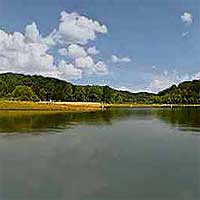 Normandy Lake. This 2,500-acre reservoir, with over 70 miles of shoreline,. has limited opportunities for fishing from shore. Bass and crappie are the primary targets here, however there are notable populations of catfish, white bass, bluegill and other sunfish.
Normandy Lake. This 2,500-acre reservoir, with over 70 miles of shoreline,. has limited opportunities for fishing from shore. Bass and crappie are the primary targets here, however there are notable populations of catfish, white bass, bluegill and other sunfish.
Primary fish species to catch
Click images for fishing tips and details about each species.
Today's Weather & Forecast
Public Boat Launch Ramps & Landings
Click here for boat ramps.
Fishing License
Click here for a Tennessee Fishing License.
Map - Fishing & Access
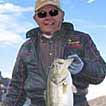 Rick Seaman is a fishing enthusiast with over five decades of fishing experience, a retired tournament fisherman, author of numerous published articles on fishing, and co-author of the book "Bass Fishing - It's not WHAT you throw, It's WHERE you throw it".
Rick Seaman is a fishing enthusiast with over five decades of fishing experience, a retired tournament fisherman, author of numerous published articles on fishing, and co-author of the book "Bass Fishing - It's not WHAT you throw, It's WHERE you throw it".
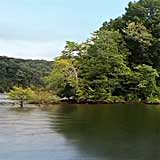 Contact Information
Contact Information
Red Rock Marina
1768 Hwy G 28
Pella, IA 50219
515 412-0664
Fishing lakes in each state
110325
Normandy Lake, Tennessee Report
TENNESSEE


Good bass and crappie fishing in south-central TN.


